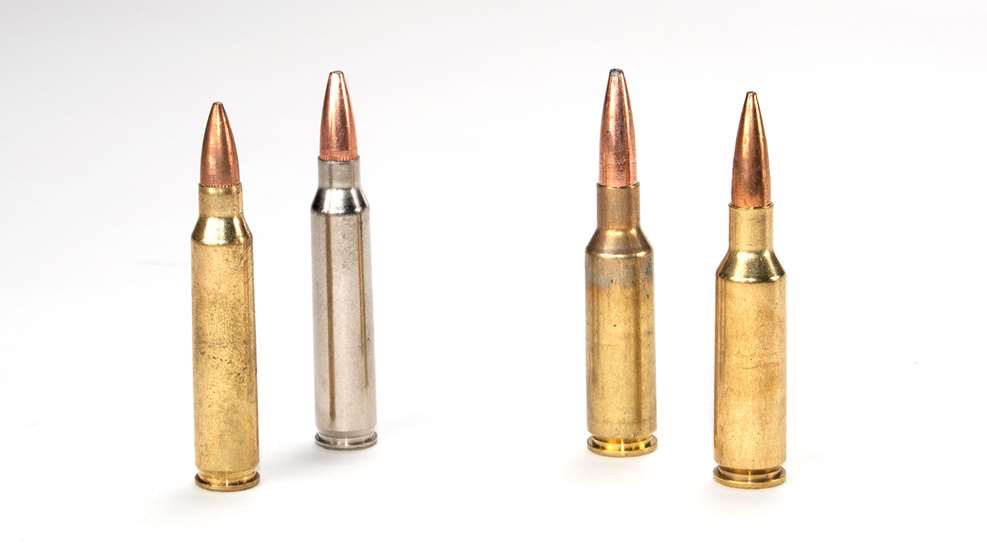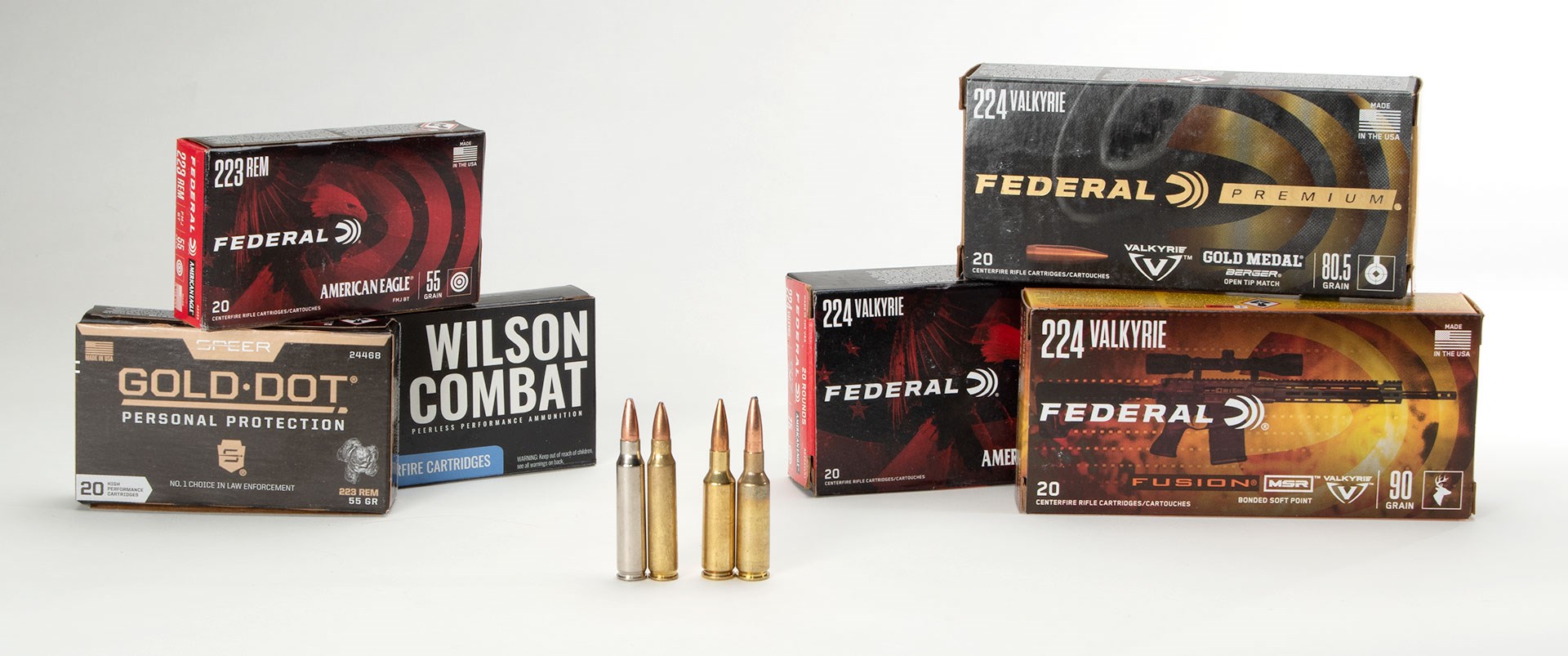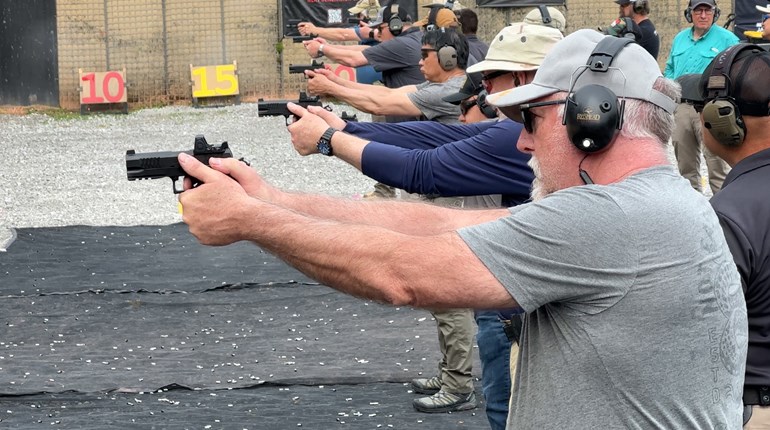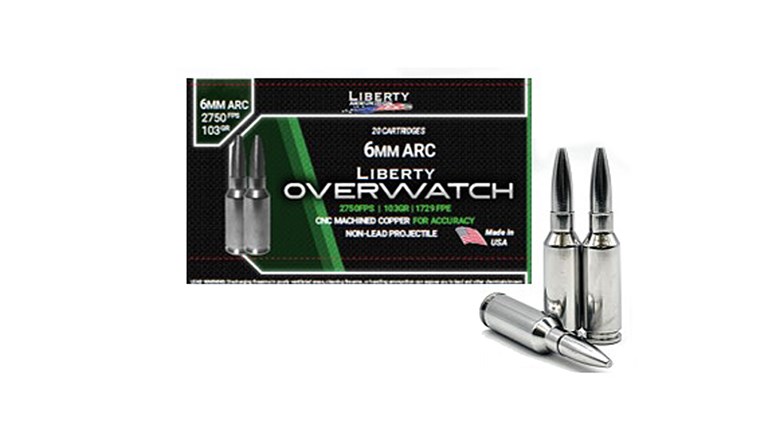
There are some cartridges that are forever tied to a certain rifle. .30-30 Win and the lever-action rifle. .30-06 and the M1 Garand. In much the same way, when you think of .223 Rem., you’re probably thinking of shooting an AR-15.
However, this is not always the case. There are many great bolt-action rifles that use the .223 Rem. Round to great effect. In addition to this, the AR-15 can be easily adapted to fire everything from .22LR to .458 SOCOM, so while most people start out shooting an AR-15 that’s chambered in .223 Rem., there’s no reason why that needs to be the only caliber you ever use in your gun. For instance, many people want to push the capabilities of the AR-15 out to as far a distance as possible, and for that, they start looking at the performance of their existing .223 Rem. cartridge versus what rounds such as .224 Valkyrie can do once things start to go past 500 meters.
To begin with, we should mention that you can’t just load .224 Valkyrie into a rifle or upper receiver chambered in .223 Rem. or its military cousin, 5.56 NATO. In an AR-15, you’ll need an upper receiver with a barrel and bolt carrier group (BCG) that’s designed for .224 Valkyrie. Ideally, for maximum reliability, you’ll also want magazines that have followers designed for use with that round or its parent cartridge, 6.8 SPC. However, I have found that a standard .223 Rem. magazine will load and fire .224 Valkyrie in a pinch.
Comparing .223 Rem. and .224 Valkyrie
Now let’s talk about why you want to shoot .223 Rem. For starters, thanks to decades of mass production, it’s one of the least expensive centerfire rifle cartridge out there. This makes it excellent for training and practice, letting you get used to how your rifle works without spending a lot of cash. Secondly, .223 Rem. is an excellent all-purpose cartridge if you stay within its limitations. It’s not a cartridge for full-sized game, nor is it something you’d want to use at 1,500+ meters (more on that later). However, .223 Rem. is ideally suited for personal defense or for a relaxing day on the range. Lastly, there are literally dozens (if not hundreds) of different cartridges loaded for this caliber, giving you multiple ways to accomplish the same goal.
.224 Valkyrie, on the other hand, is quite new, having been first introduced in 2017. It also occupies a bit of a niche inside the ammunition ecosystem. While .224 Valkyrie can be used as a short-range defensive cartridge or as an plinking cartridge on the range, it’s more expensive than .223 Rem. and was designed with other uses in mind, specifically engaging targets at longer distances than what is easily accomplished with .223 Rem. Therefore, comparing the efficiency of .223 Rem. versus .224 Valkyrie in, say, close quarters defensive scenarios is a bit silly. Instead, we’re going to see what happens to each once you go out beyond 500 yards with .223 Rem. versus using .224 Valkyrie.

To do this, we’re going to have to use a rifle that can make effective hits at that distance, so I’ve chosen a Wilson Combat Super Sniper AR-15. It shipped with a 224 Valkryie upper that has a 22 inch barrel, and in order to remove as many variables as possible, I’ll be using an additional Wilson Combat upper receiver chambered in .223 Wylde with a 20-inch barrel. I’ll be shooting ammo of different bullet weights from Federal, Speer and Wilson Combat, and for maximum accuracy, I’ll top off the AR-15 with a 3-18x Mark 5 HD Leupold optic. To measure the speed of the rounds, I’ll be using a Caldwell G2 chronograph set up 10 feet away from the muzzle of my rifle.
.223 Rem. vs .224 Valkyrie: Pushing the limits
What happens with each round once it goes past 500 yards? First we need to know if our gun and round of choice is capable of hitting a target at that kind of distance, so that means a trip to the range to shoot groups. Based on previous testing, I know that .224 Valkyrie is capable of sub-MOA accuracy using match ammunition, but what can .223 Rem. do with a good rifle and good factory ammo?
|
|
Weight |
Min. Group (inches) |
Max Group (inches) |
Avg. Group (inches) |
Avg. Velocity (fps) |
|
American Eagle FMJ |
55 |
1.67 |
2.18 |
1.97 |
3,086 |
|
Speer Gold Dot |
62 |
1.01 |
1.54 |
1.18 |
3,063 |
|
Wilson Combat |
60 |
0.74 |
1.1 |
0.91 |
3,003 |
Measured 10 feet from the muzzle with a Caldwell G2 chronometer.
As it turns out, .223 Rem. is also capable of sub-MOA accuracy, which means we can reasonably expect to hit targets 5 inches in diameter at 500 yards, or 10 inches in diameter at 1,000 yards.
Two questions remain, though. How much energy will that bullet have at those kinds of distances, and what sort of adjustments are needed in order to get your hits?
To answer both of these questions, I’ll rely on my ballistic calculator of choice, the Ballistic AE app. Plugging those numbers and those cartridges into my app tells me that 55-grain FMJ will have 295 ft.-lbs. of energy at 500 yards and 89 ft.-lbs. of energy at 1,000 yards. 295 ft.-lbs. is about the same energy as a 115 grain 9mm round has at the muzzle, and 89 ft.-lbs.? We’re talking less than .22LR energy. Yes, you can hit something at that range, but no, you’re not going to blow a gaping hole in it. 75-grain .224 Valkyrie, on the other hand, has 598 ft.-lbs. of energy at 500 yards and 222 ft.-lbs, at 1,000 yards. Still not terrific, but it’s over twice the energy of a .223 Rem. round.
It Has the Range, But the Punch? Well…
That lower amount of energy in a round of.223 Rem. vs .224 Valkyrie ammo also makes for more bullet drop as the round flies downrange. According to my app, at 500 yards a 55-grain FMJ round drops 57.48 inches, or just under six feet. The more powerful 75-grain FMJ round, on the other hand, drops 50.48 inches, or just over 4 yards. The difference is even more dramatic at 1,000 yards. 55-grain .223 Rem goes subsonic at 735 yards when shot from this gun. This induces instability into the round and can have a dramatic effect on your accuracy. As a result, at 1,000 yards, 55-grain .233 Rem drops 525.67 inches, or in excess of 14 yards.
75-grain .224 Valkyrie, on the other hand, is still supersonic at 1000 yards (it goes subsonic at 1043 yards), and drops 364.77 inches, or slightly more than 10 yards. This means less adjustment on your scope and a lower chance of error due to the round going subsonic further downrange.
So the choice between .223 Rem. vs .224 Valkyrie comes down to what you want to do with your rifle. Can you shoot at longer distances with the .223 Rem cartridge? Yes. Is it easier to do that with a rifle chambered in .224 Valkyrie? Also yes. However, .223 Rem is such a great “one size fits most” cartridge, it’s not really a question of .223 Rem. vs .224 Valkyrie. Rather, it’s a question of what other cartridge you want to use in addition to the .223 Rem. round. If you’re looking to hit targets at longer ranges, then .224 Valkyrie is definitely something to look into.




































